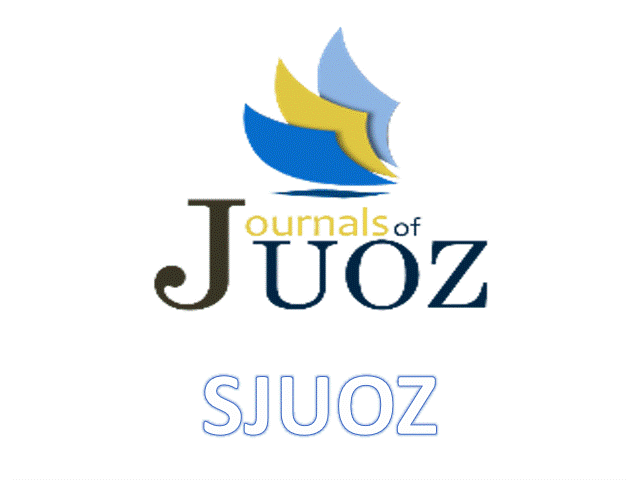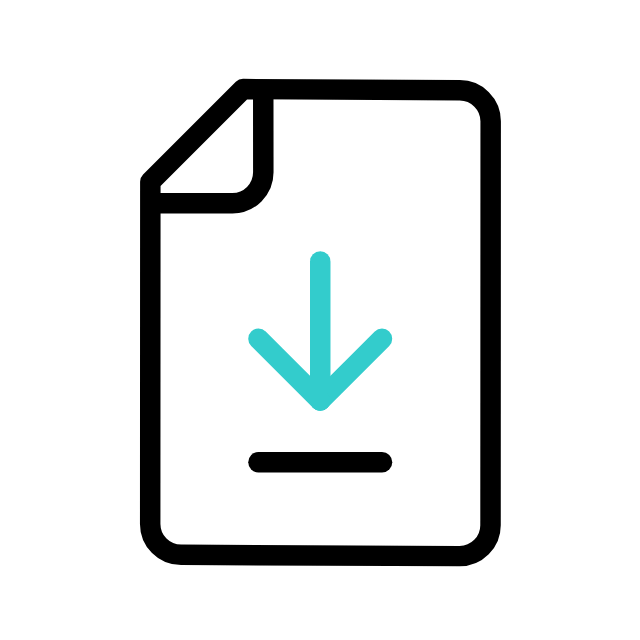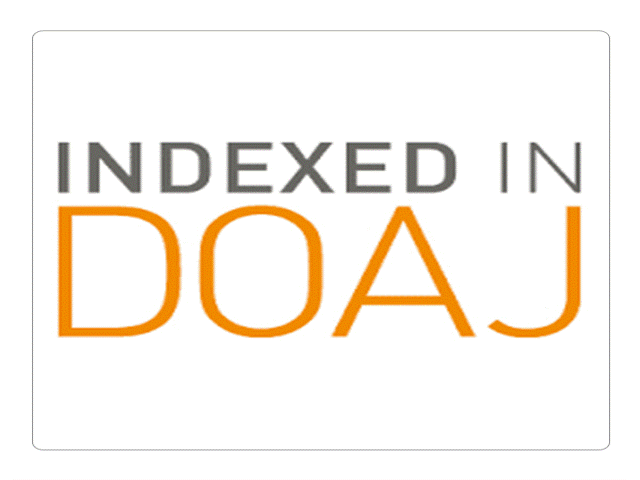BAYESIAN DEEP LEARNING APPLIED TO LSTM MODELS FOR PREDICTING COVID-19 CONFIRMED CASES IN IRAQ
DOI:
https://doi.org/10.25271/sjuoz.2023.11.2.1037Keywords:
Deep learning, Bayesian Neural Networks, LSTM, Time-series data, forecasting, MC dropout.Abstract
The COVID-19 pandemic has had a huge impact on populations around the world and has caused critical problems to medical systems. With the increasing number of COVID-19 infections, research has focused on forecasting the confirmed cases to make the right medical decisions. Despite the huge number of studies conducted to forecast the COVID-19 patients, the use of Deep Learning (DL) and Bayesian DL models are limited in this field in Iraq. Therefore, this research aims to predict the confirmed cases of COVID-19 in Iraq using classical DL models such as, Long-Short-Term-Memory (LSTM) and Bayesian LSTM models. In this study, Bayesian Deep Learning (BDL) using LSTM models was used to predict COVID-19 confirmed cases in Iraq. The motivation behind using BDL models is that they are capable to quantify model uncertainty and provide better results without overfitting or underfitting. A Monte Carlo (MC) Dropout, which is an approximation method, is added to the Bayesian-LSTM to create numerous predictions for each instance and evaluate epistemic uncertainty. To evaluate the performance of our proposed models, four evaluation measures (MSE, RMSE, R2, MAE) were used. Experimental results showed that the proposed models were efficient and provided an R2 of 0.93 and 0.92, for vanilla LSTM and Bayesian-LSTM, respectively. Furthermore, the two proposed models were optimized using ADAM and SGD optimizers, with the results revealing that optimizing with ADAM provided more accurate results. Thus, we believe that these models may assist the government in making critical decisions based on short-term predictions of confirmed cases in Iraq.
Downloads
References
Abbas, A. M., Fathy, S. K., Fawzy, A. T., Salem, A. S., & Shawky, M. S. (2020). The mutual effects of COVID-19 and obesity. Obesity Medicine, 19, 100250. https://doi.org/10.1016/j.obmed.2020.100250
Abdullah, A. A., Hassan, M. M., & Mustafa, Y. T. (2022). A Review on Bayesian Deep Learning in Healthcare: Applications and Challenges. IEEE Access, 10, 36538–36562. https://doi.org/10.1109/ACCESS.2022.3163384
Ahmed, A., Salam, B., Mohammad, M., Akgül, A., H. A. Khoshnaw, S., 1 Department of Mathematics, College of Basic Education, University of Raparin, Kurdistan Region of IRAQ, & 2 Department of Mathematics, Art and Science Facalty, Siirt University, Siirt, TURKEY. (2020). Analysis coronavirus disease (COVID-19) model using numerical approaches and logistic model. AIMS Bioengineering, 7(3), 130–146. https://doi.org/10.3934/bioeng.2020013
Ahmed, D., Hassan, M., & Mstafa, R. (2022). A Review on Deep Sequential Models for Forecasting Time Series Data. Applied Computational Intelligence and Soft Computing, 2022. https://doi.org/10.1155/2022/6596397
Alarab, I., Prakoonwit, S., & Nacer, M. I. (2021). Illustrative Discussion of MC-Dropout in General Dataset: Uncertainty Estimation in Bitcoin. Neural Processing Letters, 53(2), 1001–1011. https://doi.org/10.1007/s11063-021-10424-x
Aldeer, M., Hilli, A. A., & Ismail, I. S. (2021). Projecting the Short-Term Trend of COVID-19 in Iraq. Digital Government: Research and Practice, 2(1), 1–7. https://doi.org/10.1145/3431769
Ali, N. G., Abed, S. D., Shaban, F. A. J., Tongkachok, K., Ray, S., & Jaleel, R. A. (2021). Hybrid of K-Means and partitioning around medoids for predicting COVID-19 cases: Iraq case study. Periodicals of Engineering and Natural Sciences (PEN), 9(4), 569. https://doi.org/10.21533/pen.v9i4.2382
ArunKumar, K. E., Kalaga, D. V., Kumar, Ch. M. S., Kawaji, M., & Brenza, T. M. (2021). Forecasting of COVID-19 using deep layer Recurrent Neural Networks (RNNs) with Gated Recurrent Units (GRUs) and Long Short-Term Memory (LSTM) cells. Chaos, Solitons & Fractals, 146, 110861. https://doi.org/10.1016/j.chaos.2021.110861
Awlla, A. H., Muhammed, B. T., Murad, S. H., & Ahmad, S. N. (2021). Prediction of CoVid-19 mortality in Iraq-Kurdistan by using Machine learning. UHD Journal of Science and Technology, 5(1), 66–70. https://doi.org/10.21928/uhdjst.v5n1y2021.pp66-70
Bansal, M. (2020). Cardiovascular disease and COVID-19. Diabetes & Metabolic Syndrome, 14(3), 247–250. https://doi.org/10.1016/j.dsx.2020.03.013
Barmparis, G. D., & Tsironis, G. P. (2020). Estimating the infection horizon of COVID-19 in eight countries with a data-driven approach. Chaos, Solitons, and Fractals, 135, 109842. https://doi.org/10.1016/j.chaos.2020.109842
Bodapati, S., Bandarupally, H., & Trupthi, M. (2020). COVID-19 Time Series Forecasting of Daily Cases, Deaths Caused and Recovered Cases using Long Short Term Memory Networks. 2020 IEEE 5th International Conference on Computing Communication and Automation (ICCCA), 525–530. https://doi.org/10.1109/ICCCA49541.2020.9250863
Bouhamed, H. (2020). Covid-19 Cases and Recovery Previsions with Deep Learning Nested Sequence Prediction Models with Long Short-Term Memory (LSTM) Architecture. 7.
Chakraborty, T., & Ghosh, I. (2020). Real-time forecasts and risk assessment of novel coronavirus (COVID-19) cases: A data-driven analysis. Chaos, Solitons, and Fractals, 135, 109850. https://doi.org/10.1016/j.chaos.2020.109850
Chimmula, V. K. R., & Zhang, L. (2020). Time series forecasting of COVID-19 transmission in Canada using LSTM networks. Chaos, Solitons, and Fractals, 135, 109864. https://doi.org/10.1016/j.chaos.2020.109864
Coronavirus. (n.d.). Retrieved May 29, 2022, from https://www.who.int/health-topics/coronavirus
Dal Molin Ribeiro, M., Gomes da Silva, R., Fraccanabbia, N., Mariani, V., & Coelho, L. (2019). Forecasting Epidemiological Time Series Based on Decomposition and Optimization Approaches. https://doi.org/10.21528/CBIC2019-18
Davis, J., Jason Zhu, J., & Oldfather, J. (2020). AWS Prescriptive Guidance—Quantifying uncertainty in deep learning systems. Https://Docs.Aws.Amazon.Com/Prescriptive-Guidance/Latest/Ml-Quantifying-Uncertainty/Mc-Dropout.Html, 25.
Gal, Y., & Ghahramani, Z. (2016). Dropout as a Bayesian Approximation: Representing Model Uncertainty in Deep Learning (arXiv:1506.02142). arXiv. https://doi.org/10.48550/arXiv.1506.02142
Gautam, Y. (2022). Transfer Learning for COVID-19 cases and deaths forecast using LSTM network. ISA Transactions, 124, 41–56. https://doi.org/10.1016/j.isatra.2020.12.057
Guan, W., Ni, Z., Hu, Y., Liang, W., Ou, C., He, J., Liu, L., Shan, H., Lei, C., Hui, D. S. C., Du, B., Li, L., Zeng, G., Yuen, K.-Y., Chen, R., Tang, C., Wang, T., Chen, P., Xiang, J., … Zhong, N. (2020). Clinical Characteristics of Coronavirus Disease 2019 in China. The New England Journal of Medicine, NEJMoa2002032. https://doi.org/10.1056/NEJMoa2002032
Hochreiter, S., & Schmidhuber, J. (1997). Long Short-Term Memory. Neural Computation, 9(8), 1735–1780. https://doi.org/10.1162/neco.1997.9.8.1735
Hussain, A., Bhowmik, B., & do Vale Moreira, N. C. (2020). COVID-19 and diabetes: Knowledge in progress. Diabetes Research and Clinical Practice, 162, 108142. https://doi.org/10.1016/j.diabres.2020.108142
Ibrahim, M. A., & Al-Najafi, A. (2020). Modeling, Control, and Prediction of the Spread of COVID-19 Using Compartmental, Logistic, and Gauss Models: A Case Study in Iraq and Egypt. Processes, 8(11), 1400. https://doi.org/10.3390/pr8111400
Istaiteh, O., Owais, T., Al-Madi, N., & Abu-Soud, S. (2020). Machine Learning Approaches for COVID-19 Forecasting. 2020 International Conference on Intelligent Data Science Technologies and Applications (IDSTA), 50–57. https://doi.org/10.1109/IDSTA50958.2020.9264101
Kırbaş, İ., Sözen, A., Tuncer, A. D., & Kazancıoğlu, F. Ş. (2020). Comparative analysis and forecasting of COVID-19 cases in various European countries with ARIMA, NARNN and LSTM approaches. Chaos, Solitons & Fractals, 138, 110015. https://doi.org/10.1016/j.chaos.2020.110015
Lai, C.-C., Shih, T.-P., Ko, W.-C., Tang, H.-J., & Hsueh, P.-R. (2020). Severe acute respiratory syndrome coronavirus 2 (SARS-CoV-2) and coronavirus disease-2019 (COVID-19): The epidemic and the challenges. International Journal of Antimicrobial Agents, 55(3), 105924. https://doi.org/10.1016/j.ijantimicag.2020.105924
Machine learning approach for confirmation of COVID-19 cases: Positive, negative, death and release. (n.d.). Periodikos. Retrieved May 29, 2022, from http://www.iberoamericanjm.periodikos.com.br/journal/iberoamericanjm/article/doi/10.5281/zenodo.3822623
Mohammed, D. A., Tawfeeq, H. M., Ali, K. M., & Rostam, H. M. (2021). Analysis and Prediction of COVID-19 Outbreak by a Numerical Modelling. Iraqi Journal of Science, 1452–1459. https://doi.org/10.24996/ijs.2021.62.5.8
Moujaess, E., Kourie, H. R., & Ghosn, M. (2020). Cancer patients and research during COVID-19 pandemic: A systematic review of current evidence. Critical Reviews in Oncology/Hematology, 150, 102972. https://doi.org/10.1016/j.critrevonc.2020.102972
Mullachery, V., Khera, A., & Husain, A. (2018). Bayesian Neural Networks.
Mustafa, H. I., & Fareed, N. Y. (2020). COVID-19 Cases in Iraq; Forecasting Incidents Using Box—Jenkins ARIMA Model. 2020 2nd Al-Noor International Conference for Science and Technology (NICST), 22–26. https://doi.org/10.1109/NICST50904.2020.9280304
Nadler, P., Arcucci, R., & Guo, Y. (n.d.). A Neural SIR Model for Global Forecasting. 13.
Ndaïrou, F., Area, I., Nieto, J. J., & Torres, D. F. M. (2020). Mathematical modeling of COVID-19 transmission dynamics with a case study of Wuhan. Chaos, Solitons, and Fractals, 135, 109846. https://doi.org/10.1016/j.chaos.2020.109846
Rao, K., PATRA, G., Mopuri, R., & Mutheneni, S. R. (2020). A deep learning approach for prediction of SARS-CoV-2 cases using the weather factors in India. https://doi.org/10.22541/au.160275979.91541585/v1
Rauf, H. T., Lali, M. I. U., Khan, M. A., Kadry, S., Alolaiyan, H., Razaq, A., & Irfan, R. (2021). Time series forecasting of COVID-19 transmission in Asia Pacific countries using deep neural networks. Personal and Ubiquitous Computing. https://doi.org/10.1007/s00779-020-01494-0
Ribeiro, M. H. D. M., da Silva, R. G., Mariani, V. C., & Coelho, L. dos S. (2020). Short-term forecasting COVID-19 cumulative confirmed cases: Perspectives for Brazil. Chaos, Solitons, and Fractals, 135, 109853. https://doi.org/10.1016/j.chaos.2020.109853
Shetty, R. P., & Pai, P. S. (2021). Forecasting of COVID 19 Cases in Karnataka State using Artificial Neural Network (ANN). Journal of The Institution of Engineers (India): Series B, 102(6), 1201–1211. https://doi.org/10.1007/s40031-021-00623-4
Singh, S., Parmar, K. S., Kumar, J., & Makkhan, S. J. S. (2020). Development of new hybrid model of discrete wavelet decomposition and autoregressive integrated moving average (ARIMA) models in application to one month forecast the casualties cases of COVID-19. Chaos, Solitons, and Fractals, 135, 109866. https://doi.org/10.1016/j.chaos.2020.109866
Su, H., Yang, M., Wan, C., Yi, L.-X., Tang, F., Zhu, H.-Y., Yi, F., Yang, H.-C., Fogo, A. B., Nie, X., & Zhang, C. (2020). Renal histopathological analysis of 26 postmortem findings of patients with COVID-19 in China. Kidney International, 98(1), 219–227. https://doi.org/10.1016/j.kint.2020.04.003
Tomar, A., & Gupta, N. (2020). Prediction for the spread of COVID-19 in India and effectiveness of preventive measures. Science of The Total Environment, 728, 138762. https://doi.org/10.1016/j.scitotenv.2020.138762
Yahya, B. M., Yahya, F. S., & Thannoun, R. G. (2021). COVID-19 prediction analysis using artificial intelligence procedures and GIS spatial analyst: A case study for Iraq. Applied Geomatics, 13(3), 481–491. https://doi.org/10.1007/s12518-021-00365-4
Published
How to Cite
Issue
Section
License
Copyright (c) 2023 Masoud Muhammed Hassan, Dozdar Ahmed

This work is licensed under a Creative Commons Attribution 4.0 International License.
Authors who publish with this journal agree to the following terms:
- Authors retain copyright and grant the journal right of first publication with the work simultaneously licensed under a Creative Commons Attribution License [CC BY-NC-SA 4.0] that allows others to share the work with an acknowledgment of the work's authorship and initial publication in this journal.
- Authors are able to enter into separate, additional contractual arrangements for the non-exclusive distribution of the journal's published version of the work, with an acknowledgment of its initial publication in this journal.
- Authors are permitted and encouraged to post their work online.








